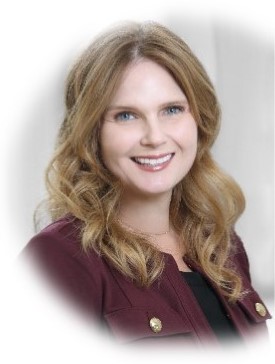It is hard for me to believe that it has already been three months since being named the NIH Associate Director for Science Policy. Since time doesn’t seem to be moving any slower, I wanted to make sure to take a breather and talk about a subject I am very passionate about! Engaging people and communities in novel and meaningful ways to drive responsive and impactful policies. In my years at NIH, I have heard many misconceptions (and even downright myths) about how OSP engages communities and ultimately utilizes the input we receive. With misinformation rife, this feels like an opportune time to debunk some of those myths (as an aside, this does raise the age-old question “is bunk good or bad”?)
Now that we have that out of the way, let’s get started! At risk of seeming cringe, I will be using gifs to boost engagement with the debunking.

CLAIM: The NIH Office of Science Policy aims to engage all its stakeholders in meaningful, bi-directional dialogue to ensure that communities affected by our policies feel they have a voice.

This is 100% fact. My philosophy on community engagement is that it must be continuous, accessible, and honest. Us simply talking at you is not true engagement. At OSP, we want to establish relationships that enable people to feel comfortable telling us about their thoughts on the policies we develop. To ensure bi-directional communication, we work to seek feedback through request for information or stakeholder meetings, and have also developed numerous resources to foster engagement. You can reach us on X, LinkedIn, or through email. In addition, you can always contact an OSP staff member directly by utilizing our employee directory.
CLAIM: When OSP asks for public feedback, it goes into a black-box and the public must do a lot of guess work on what OSP does with the comments.

One of the things, I am most proud about OSP is our commitment to transparency around policymaking. As a person with lots of opinions, I know how frustrating it is to take the time to carefully carve out options for improvement and feel like they descend into a black hole. After considering all of the comments we receive on our proposal, we post them, in full, to our website. Not only can individuals find their own comments, but they can also see what other interested members of the public feel about our proposals.
Once we have finalized our proposals, we publish the final policies in the NIH Guide to Grants and Contracts. The final policy includes a summary of the comments we received as well as what changes NIH made because of the feedback we received.
CLAIM: I am very interested in the work OSP does but feel that I sometimes have missed something important from them.

In addition to the multiple social media channels mentioned above, you can also subscribe to the OSP listserv so that you never miss any of the announcements we make regarding policy matters, training opportunities, webinars, and more. OSP also maintains a robust, comprehensive list of partner organizations. If you would like your organization added to that list, it can be done easily through an email request. I wish every problem in my job could be as easy to solve as this one!
CLAIM: It feels like the people OSP engage with are either other policymakers and/or researchers affected by their policies. It would be nice to see more commitment to a broader set of the public.

One of my highest priorities when it comes to OSP is making sure everyone has an equal opportunity and meaningful voice in contributing to the policy development process. OSP, and the broader NIH, has made this commitment a priority and I’m excited to share with you a few of our latest successes.
Last September, the Novel and Exceptional Technology and Research Advisory Committee (NExTRAC) issued its final report on Data Science in Emerging Technology in Biomedical Research, which among other things, provided recommendations on how NIH should approach community engagement. To inform the recommendations of this report, NIH held a series of “community conversations” across the U.S. to learn more about people’s preferences when it came to health data. This activity paid large dividends as we received in-depth, candid feedback from participants.
Building on these efforts, the NExTRAC has now been charged with establishing the ENGAGE Working Group (WG) to develop a vision and framework for including public voices in the design and planning of NIH-funded clinical research, as well as widespread dissemination of study findings. The ENGAGE WG will assess the opportunities and challenges of varying levels of engagement activities for different types of clinical research studies as well as identify the impact and value of engagement with patients, communities, and the broader public.
CLAIM: Based on NIH’s size and the number of Institutes funding and conducting research it is probably impossible for OSP to accurately gauge the pulse the research community

I have certainly heard this one a few times. There is the perception that an agency like NIH operates individually, instead of as a whole. Being in the NIH Office of the Director, I can happily dispel this notion! While OSP does not fund scientific proposals that undergo NIH’s rigorous peer-review process, we do collaborate and coordinate with our IC partners daily. Since OSP is situated in the Office of the Director, it is well positioned to survey the research landscape and provide the policy infrastructure that allows vital research to move forward in an ethical and safe manner.
To make sure OSP is achieving its mission, we not only need to ensure maximum engagement with people within our own house, but also ensure that we are listening to policymakers, researchers, ethicists, patients, community members, and people just like you!
I am proud to say that OSP is in lockstep with the vision that NIH Director Dr. Monica Bertagnolli has expressed with respect to ensuring that NIH engages all people and communities in research to inform biomedical research. As we move forward in making this vision a reality, I hope the information above has been helpful in clarifying OSP’s role at NIH and our future plans and activities. I encourage anyone who wants to learn more about OSP and our mission to contact OSP’s Director for Strategic Engagement, Ryan Bayha ([email protected]), to chat more about how we can work together to optimize community engagement.






